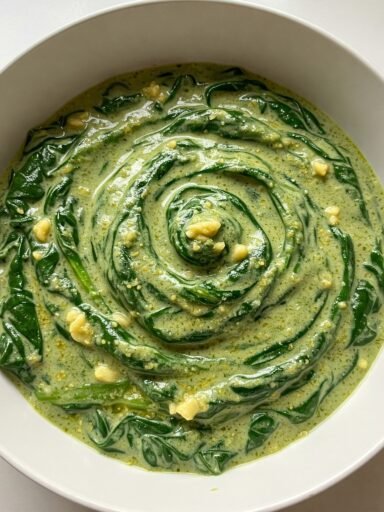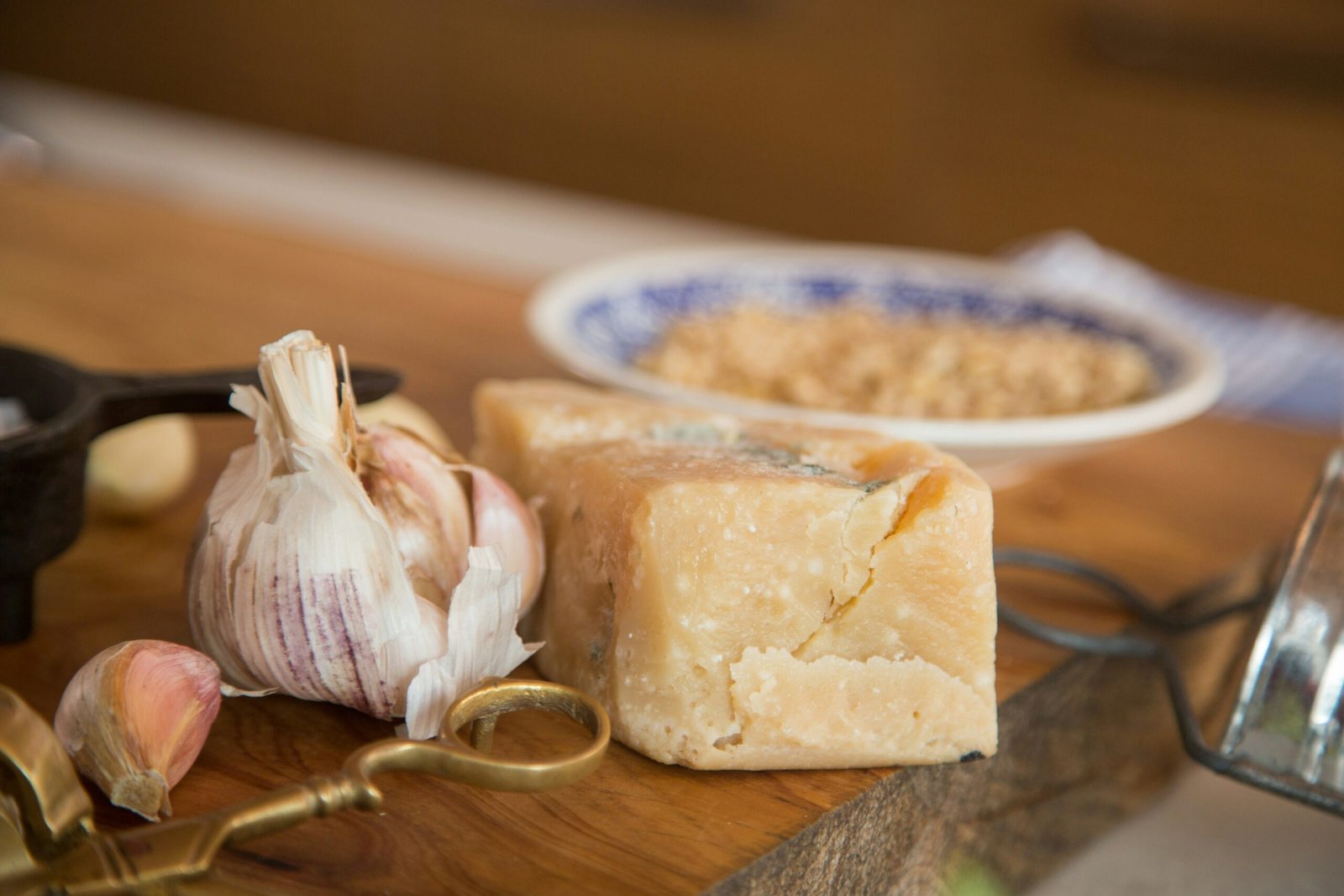Introduction to Chicken Satay
Chicken satay is a dish that boasts deep cultural roots, originating from the vibrant culinary traditions of Indonesia and Malaysia. With its marinated skewered chicken, grilled to perfection, and often accompanied by a rich, savory peanut sauce, chicken satay tells a story of flavor and communal shared experiences. Traditionally, this beloved dish is prepared during festive occasions, neighborhood gatherings, or family celebrations, symbolizing unity and conviviality.
The origins of chicken satay are often traced back to the street vendors of Southeast Asia. In bustling markets and food stalls, patrons are treated to the fragrant aroma of grilled meat wafting through the air, attracting both locals and tourists alike. As this dish gained recognition, it began to resonate beyond its Asian roots, eventually finding a place on menus in both casual eateries and upscale dining establishments throughout the Western world. In many regions, chicken satay has become synonymous with street food, showcasing the incredible fusion of flavors that represent local culinary styles.
Sharing personal anecdotes, many families have warm memories associated with preparing chicken satay together. Whether marinating the chicken in a blend of spices and coconut milk or crafting the peanut sauce from scratch, the process often becomes a cherished bonding experience. Children learn the art of grilling, while adults share stories of their own childhood memories surrounding food. This familial recipe is not just about nourishment; it is also about fostering connections and creating lasting traditions. As a result, chicken satay transcends mere sustenance, transforming into a symbol of shared love and joy among family members.
Ingredients for Chicken Satay
To create a delightful Chicken Satay paired with a rich peanut sauce, it is essential to gather the proper ingredients. Below is a comprehensive list that includes precise measurements to ensure a balanced flavor profile, as well as alternatives for those seeking substitutions.
For the Chicken Satay, you will need:
- 1 pound of boneless, skinless chicken thighs or breasts, cut into bite-sized pieces. If you prefer a leaner option, turkey breast can work as a suitable alternative.
- 2 tablespoons of soy sauce, which enhances the flavor with its umami richness. Tamari can be used as a gluten-free substitute.
- 1 tablespoon of vegetable oil to aid in marinating and grilling. Olive oil can be a flavorful alternative.
- 1 tablespoon of brown sugar, adding a touch of sweetness. For a healthier option, honey or maple syrup could be used.
- 1 teaspoon of garlic powder to infuse a robust taste; fresh minced garlic can also be employed for a more potent flavor.
- 1 teaspoon of ground coriander, providing a warm, citrusy note. If unavailable, cumin can be a good replacement.
- 1/2 teaspoon of ground turmeric not only offers a vibrant color but also a subtle earthiness.
- 1/2 teaspoon of ground black pepper for seasoning.
- Wooden skewers, soaked in water for 30 minutes to prevent burning while grilling.
For the Peanut Sauce, gather the following ingredients:
- 1 cup of creamy peanut butter, which serves as the base for the sauce. Almond or sunflower seed butter can be excellent alternatives for those with nut allergies.
- 1/4 cup of soy sauce, imparting a savory taste. Coconut aminos may be used instead for a soy-free option.
- 1 tablespoon of honey or brown sugar to balance the richness of the peanut butter.
- 1 tablespoon of lime juice for brightness; rice vinegar is a viable substitute.
- 1/2 teaspoon of red pepper flakes or sriracha to taste, depending on your spice tolerance.
- Water as needed to achieve your desired consistency.
This thoughtfully curated list ensures that cooks of all skill levels can easily access and prepare the savory Chicken Satay and its accompanying peanut sauce, making it a delightful addition to any family meal.
Step-by-Step Cooking Instructions
To create a delightful chicken satay with peanut sauce, one must follow a few essential steps. Begin by gathering the necessary ingredients, which will typically include chicken breast, soy sauce, garlic, ginger, and peanut butter among others. It is vital to have everything ready before starting the cooking process.
First, prepare the marinade. In a bowl, combine soy sauce, minced garlic, grated ginger, and a touch of oil. This mixture not only adds flavor but also tenderizes the chicken. Cut the chicken breasts into thin strips to allow for better absorption of the marinade. Once cut, place the chicken in the marinade, ensuring that each piece is well coated. Cover the bowl and let it marinate in the refrigerator for at least one hour, though overnight is preferable for richer flavor.
After the chicken has marinated, it is time to prepare the grill. Preheat your grill to medium-high heat (approximately 375°F to 400°F). If you are using wooden skewers, soak them in water for about 30 minutes to prevent burning. Thread the marinated chicken pieces onto the skewers, leaving a little space between each piece for even cooking.
Next, place the skewers on the preheated grill. Cook the chicken satay for about 8 to 10 minutes, turning occasionally, until the chicken is fully cooked and has beautiful grill marks. The internal temperature should reach 165°F to ensure it is safe to eat. As the chicken grills, prepare the peanut sauce by mixing peanut butter with soy sauce, lime juice, and a bit of sugar to create a smooth and creamy texture.
Once the chicken is cooked, remove the skewers from the grill and serve them immediately with the freshly prepared peanut sauce. Enjoying this savory chicken satay as a family favorite will surely delight everyone gathered around the table.
Making the Perfect Peanut Sauce
Creating a rich and creamy peanut sauce is essential for enhancing the flavor of chicken satay. This delectable sauce is not only simple to prepare but also serves as a versatile condiment that can cater to different taste preferences. The essential ingredients include smooth peanut butter, soy sauce, coconut milk, fresh lime juice, garlic, and a touch of sweetness from honey or brown sugar.
To begin the preparation, gather the required ingredients. Use approximately half a cup of smooth peanut butter, a quarter cup of soy sauce, a third of a cup of coconut milk, the juice of one lime, and one or two cloves of minced garlic. For sweetness, incorporate one to two tablespoons of honey or brown sugar. For an extra kick, consider adding red pepper flakes or sriracha sauce to suit your preferred spice level.
In a medium saucepan, combine the peanut butter, soy sauce, and coconut milk over medium heat. Stir the mixture continuously to ensure it blends seamlessly, creating a smooth texture without lumps. Once the mixture is well-combined and heated through, remove it from the heat. Next, add the lime juice and minced garlic, stirring thoroughly to incorporate the flavors. If desired, adjust the consistency by adding a little more coconut milk or water to achieve your preferred thickness.
This easy peanut sauce can be personalized based on individual tastes. For a creamier texture, consider blending in additional peanut butter or coconut milk. If a sweeter profile is preferred, increase the honey or brown sugar. Conversely, for those who enjoy a tangy flavor, a splash of rice vinegar can add a delightful twist. The resulting peanut sauce is not only perfect for chicken satay but also makes an excellent dip for fresh vegetables or a dressing for salads.

Chicken Satay with Peanut Sauce
Ingredients
- For the chicken satay:
- 1 pound boneless skinless chicken breasts, cut into 1-inch cubes
- 1/4 cup soy sauce
- 1 tablespoon honey
- 1 tablespoon rice vinegar
- 1 teaspoon minced garlic
- 1/2 teaspoon red pepper flakes
- 1/4 teaspoon ground ginger
- 1 tablespoon vegetable oil
- 12-16 wooden skewers
- For the peanut sauce:
- 1/2 cup creamy peanut butter
- 1/4 cup soy sauce
- 1/4 cup hot water
- 2 tablespoons rice vinegar
- 1 tablespoon honey
- 1 tablespoon lime juice
- 1 tablespoon chili oil optional
- 1 clove garlic minced
- 1 tablespoon grated ginger
Instructions
Prepare the chicken:
- In a large bowl, combine the soy sauce, honey, rice vinegar, garlic, red pepper flakes, and ginger.
- Add the chicken cubes and toss to coat evenly.
- Marinate the chicken in the refrigerator for at least 30 minutes, or up to 2 hours.
Cook the chicken:
- Preheat a grill or grill pan to medium-high heat.
- Thread the marinated chicken cubes onto the wooden skewers, making sure they are not overcrowded.
- Grill the skewers for 3-4 minutes per side, or until cooked through and slightly charred.
- Make the peanut sauce:
- In a small bowl, combine the peanut butter, soy sauce, hot water, rice vinegar, honey, lime juice, chili oil (if using), garlic, and ginger.
- Stir until smooth and creamy.
Serve:
- Serve the grilled chicken skewers with the peanut sauce. Garnish with chopped peanuts or green onions, if desired.
- Enjoy your delicious chicken satay!
Notes
Prep time: 20 minutes
Cook time: 15 minutes
Essential Cooking Equipment
To prepare the savory chicken satay with delicious peanut sauce, it is crucial to have the right cooking equipment on hand. This ensures that the process is smooth and efficient, enabling cooks of all skill levels to successfully create this family favorite recipe. The following items are essential for preparing and cooking chicken satay.
First and foremost, skewers are vital for this dish. While traditional bamboo skewers are popular, metal skewers are also an excellent option for those seeking longevity and durability. If bamboo skewers are used, it’s recommended to soak them in water for about 30 minutes before grilling to prevent burning. This simple step helps achieve that perfect char without compromising the flavors.
Next, the grilling apparatus is equally important. A charcoal or gas grill can impart a distinct smoky flavor to the chicken, making it incredibly flavorful. However, for those without outdoor space, an indoor grill or a grill pan will also suffice. Ensure that the cooking surface is well-preheated to facilitate even cooking, allowing the chicken to reach the desired tenderness and juiciness.
In addition to skewers and grills, a meat thermometer proves beneficial for ensuring that the chicken is cooked to perfection. The internal temperature should reach at least 165°F (75°C) to ensure food safety. Alongside these tools, a mixing bowl for combining the marinade and a cutting board for preparation are necessary. A sharp knife will ease the slicing process, allowing for even distribution of flavors.
Finally, small utensils such as brushes for basting the chicken with sauce and tongs for flipping the skewers will enhance the overall cooking experience. With these essential cooking tools, creating savory chicken satay becomes an approachable venture for everyone. Enjoy the satisfied smiles of your family as they savor this delightful dish.
Marination Process
Marination is a crucial step in the preparation of savory chicken satay, enhancing both flavor and texture. When marinating chicken, the goal is to allow the meat to absorb the marinade, which is a mixture of ingredients that often includes soy sauce, garlic, ginger, and spices. This infusion not only amplifies the chicken’s taste but also helps in tenderizing the protein, resulting in a more succulent dish.
The ideal marination time for chicken can vary, depending on the cut and the ingredients used. For optimal results, it is recommended to marinate the chicken for at least one hour. However, marinating for a longer duration, such as overnight, can elevate the flavors immensely. It is important to note that the chicken should not be left in the marinade for too long, especially if it contains acidic components like vinegar or citrus, as this can lead to a mushy texture.
When selecting chicken for this recipe, it is advisable to choose boneless pieces, preferably thighs, due to their higher fat content, which contributes to the moistness of the final dish. Ensure the chicken is evenly cut into uniform pieces to promote even absorption of the marinade. A helpful tip is to score the surface lightly; this technique creates additional surface area that allows the marinade to penetrate more effectively. Always use a non-reactive bowl or a resealable plastic bag to marinate to maintain the integrity of the flavors.
Finally, when the marination is complete, it is essential to allow the chicken to come to room temperature before grilling, which ensures even cooking. In conclusion, taking the time to properly marinate chicken not only enriches the flavor profile of your satay but also guarantees that each bite is deliciously tender.
Grilling Techniques for Chicken Satay
When preparing chicken satay, mastering the grilling technique is crucial to create a flavorful and succulent dish. One effective method to enhance your grilling is by using skewers properly. It is advisable to soak wooden skewers in water for at least thirty minutes before usage, as this helps to prevent them from burning on the grill. Metal skewers are also an excellent option for their reusability and sturdiness. When threading the marinated chicken onto skewers, ensure the pieces are uniformly sized to promote even cooking.
When considering the type of grill, both charcoal and stovetop options have their benefits. Cooking on a charcoal grill imparts a distinct smoky flavor to the chicken satay, a characteristic appreciated in traditional preparations. This method requires preheating the grill and maintaining the right balance of heat; ideally, the coals should be glowing red with a light coating of ash. In contrast, a stovetop grill pan offers convenience and control, allowing you to cook indoors without compromising taste. When using this method, ensure that the grill is appropriately heated and pre-oiled to prevent sticking.
Achieving the perfect char while avoiding overcooking is a fine balance. One useful tip is to monitor the internal temperature of the chicken, aiming for a range of 165°F to 175°F. This ensures that the chicken is thoroughly cooked while remaining juicy. To obtain that coveted grilled crust, cook the satay without moving it too frequently; this allows the meat to develop a strong sear. Turn the skewers only when necessary, observing the color and texture of the chicken to determine when to flip. These tips will facilitate the preparation of tender and delicious chicken satay that your family is sure to love.
Serving Suggestions
Chicken satay, with its tender marinated meat and rich peanut sauce, offers a versatile dining experience that can be elevated through thoughtful serving suggestions. To create a well-rounded meal, consider pairing your chicken satay with various flavorful side dishes that complement its savory and slightly sweet profile.
Vegetable stir-fries present a vibrant choice, balancing the protein with an array of textures and colors. Consider incorporating bell peppers, broccoli, or snap peas, all of which can enhance the dish both nutritionally and visually. Another excellent option is a fragrant coconut rice, which can provide a creamy contrast to the bold flavors of the satay and peanut sauce. For a lighter alternative, a simple cucumber salad with a tangy dressing can refresh the palate and add a crunchy element to the meal.
When it comes to plating, especially for family gatherings or picnics, presentation is key. Serving the chicken satay on a large wooden board can create a rustic appeal, inviting guests to help themselves. Arrange the skewers in a fan shape, drizzling the peanut sauce artistically around the board. Small bowls of extra sauce and garnishes, such as chopped peanuts, cilantro, or lime wedges, can be placed nearby to encourage customization.
Garnishes play a crucial role in enhancing both appearance and flavor of chicken satay. Fresh herbs, like cilantro or mint, can add a pop of color, while lime wedges provide a zesty finishing touch. For additional crunch, sprinkle some toasted sesame seeds or crispy shallots over the skewers. These simple additions not only elevate the presentation but also invite your guests to enjoy a delightful culinary experience.
Pairing Beverages with Chicken Satay
Chicken satay is a delightful dish that is both savory and subtly spiced, making the selection of complementary beverages crucial for enhancing the overall dining experience. When considering drinks to pair with chicken satay, it is important to focus on flavors that can balance the richness of the peanut sauce and the grilled notes of the chicken. Both alcoholic and non-alcoholic options exist to cater to different tastes and occasions.
For those who prefer alcoholic beverages, light and refreshing choices tend to work best. A chilled white wine, such as Sauvignon Blanc or Pinot Grigio, can provide a crisp contrast to the savory elements of the dish. These wines often possess citrus and herbal notes that complement the peanut sauce without overpowering the distinct flavors of the chicken. If you are in search of a beer pairing, consider a light lager or a pale ale, which can enhance the savory profile while providing a refreshing palate cleanser.
On the other hand, non-alcoholic options can also elevate the enjoyment of chicken satay. A classic choice is iced tea, particularly varieties like green tea or jasmine tea, which contribute subtle floral notes. Alternatively, homemade lemonade or limeade can provide a zesty brightness that marries well with the savory elements of the dish. For a unique twist, a mango or pineapple soda offers a fruity sweetness that can enhance the dining experience.
Lastly, for those who prefer a more traditional beverage, serving chicken satay with coconut water provides a refreshing and tropical complement. Its natural sweetness and lightness serve as a great counterbalance to the richness of the peanut sauce, making every bite and sip a cohesive experience. By selecting the right beverages to accompany chicken satay, one can create a delightful array of flavors that your guests will surely enjoy.
Tips for Leftovers
When it comes to enjoying your savory chicken satay beyond the initial meal, proper storage and reheating are essential to maintain flavor and safety. To begin with, it is advisable to store any leftover chicken satay in a shallow, airtight container within two hours of cooking. This helps to avoid bacteria growth, ensuring that your delicious dish remains safe to consume. When refrigerating, aim to use the leftovers within three to four days. If you wish to extend the shelf life, you might consider freezing the chicken satay. It can last up to three months when wrapped tightly in plastic wrap or aluminum foil, then placed in an airtight freezer bag.
When you are ready to enjoy your leftover chicken satay, reheating it properly is crucial. For best results, use an oven or air fryer at a moderate temperature (around 350°F) for about 10-15 minutes, ensuring that the chicken is heated through without drying out. You can also use a microwave on medium power, but be sure to cover the dish with a lid or a damp paper towel to retain moisture. Alternatively, a stovetop method with a small amount of oil in a skillet can enhance the texture and flavor of the satay.
Leftover chicken satay is not only perfect reheat but can also be creatively used in other culinary applications. Consider slicing the meat to incorporate it into salads, wraps, or grain bowls, where it can add a protein boost. Moreover, you might blend the leftover pieces with fresh vegetables and a drizzle of the delicious peanut sauce to create a high-flavor stir-fry. By thinking outside the box, you can transform your leftovers into exciting new meals and reduce waste, making the most of your family favorite recipe.
Dietary Considerations and Alternatives
Chicken satay is a beloved dish that can be enjoyed by various dietary preferences by making some thoughtful adjustments. For those requiring gluten-free options, it is important to ensure that the ingredients used do not contain gluten. Traditional soy sauce is often a concern due to its wheat content; however, gluten-free tamari serves as a suitable alternative that can provide the same flavor profile without the gluten. Additionally, it is critical to check that any marinades or sauces are labeled as gluten-free, allowing individuals with celiac disease or gluten sensitivities to delight in this savory dish.
Vegetarians and vegans looking to savor chicken satay can easily substitute chicken with tofu or tempeh. These plant-based alternatives absorb marinades well and can offer a similar texture when grilled. For those who are not keen on soy, seitan—made from wheat gluten—can also serve as an excellent meat substitute. When preparing the peanut sauce, ensure it does not contain fish sauce, which is commonly included in certain recipes, but can be replaced with a mixture of soy sauce and lime juice to maintain flavor depth without compromising dietary needs.
Further dietary considerations can focus on health-conscious alternatives. For a lighter version, one can opt for skinless chicken breasts instead of thighs, significantly reducing the fat content. Moreover, incorporating more vegetables into the skewers, such as bell peppers or zucchini, not only boosts nutritional value but also enhances the dish’s flavor and color. It is essential to tailor the dish according to one’s dietary needs while retaining the delightful essence of chicken satay, ultimately allowing everyone to enjoy this family favorite.
Variations on the Classic Recipe
While the traditional chicken satay is undeniably delicious, there are numerous variations that can elevate this classic dish. By exploring different marinades, ingredient substitutions, and regional influences, one can easily find a new favorite way to enjoy this savory delight.
One popular twist involves altering the marinade. For instance, incorporating coconut milk and lime juice can infuse the chicken with a tropical flavor that complements the nutty peanut sauce beautifully. Alternatively, a marinade made with soy sauce, ginger, and garlic can add an Asian twist. For those interested in spicier profiles, consider adding chili paste or sriracha to the marinade to awaken the taste buds.
Ingredient substitutions also offer a chance to customize the chicken satay. While chicken breast is the most commonly used meat, one can experiment with chicken thighs for a juicier result. For a vegetarian or vegan alternative, tofu or tempeh can be marinated and grilled, providing a satisfying and protein-rich option. Additionally, shrimp or beef can be used to create satay variations that cater to different preferences and dietary restrictions.
Regional variations also bring a new dimension to this dish. In Thailand, satay is often served with a side of cucumber salad, offering a refreshing contrast to the rich peanut sauce. In Indonesia, one can find satay made with a sweet soy sauce, known as kecap manis, which adds a distinctive caramelized flavor to the skewers. Similarly, Malaysian-style satay might include additional spices such as turmeric or coriander in the marinade, showcasing the culinary influences of the region.
By embracing these variations, you can create a personalized and enjoyable chicken satay experience that reflects individual tastes and enhances the dining experience for the whole family.
Nutritional Information
Understanding the nutritional composition of Savory Chicken Satay with Delicious Peanut Sauce is essential for those looking to maintain a balanced diet while enjoying this popular dish. The caloric content and macronutrient breakdown can guide health-conscious individuals in making informed dietary choices.
One serving of chicken satay typically contains approximately 250 calories. This makes it a relatively low-calorie option for a protein-rich meal. The protein content is significant, with each serving providing about 25 grams of protein derived primarily from chicken breast. Protein is vital for muscle repair and growth, making chicken satay an excellent choice for individuals engaged in regular physical activity or those looking to increase their protein intake.
Fats are also a crucial component of this dish, primarily coming from the peanut sauce. A standard serving contains about 15 grams of fat; however, it is essential to note that a considerable portion of these fats is unsaturated. Unsaturated fats can have beneficial effects on heart health when consumed in moderation. The peanuts used in the sauce add not only flavor but also important nutrients, including vitamin E, magnesium, and fiber.
Carbohydrates in chicken satay primarily come from any accompanying side dishes, such as rice or vegetables. Each serving of chicken satay itself contains around 5 grams of carbohydrates, making it a suitable option for those monitoring their carb intake. The minimal carbohydrates allow the dish to fit comfortably into low-carb meal plans while still providing essential energy through protein and fats.
In conclusion, this nutritional breakdown highlights that Savory Chicken Satay with Delicious Peanut Sauce offers a balanced mixture of protein, healthy fats, and low carbohydrates, making it a delightful option for families seeking nutritious meals.
Time-Saving Tips for Busy Cooks
Preparing savory chicken satay can be a delightful experience, but for busy home cooks, time efficiency is key. To streamline the cooking process, several practical tips can be implemented that not only save time but also enhance the experience of preparing this family favorite. One of the most effective time-saving strategies is to make the peanut sauce in advance. By preparing the sauce ahead of time, perhaps even the day before, you can allow the flavors to meld beautifully, which often improves the overall taste. Store the sauce in an airtight container in the refrigerator; it can last for several days, making it ready to use whenever you decide to whip up the chicken satay.
Another efficient approach is to prep the chicken ahead of time. Marinate the chicken pieces at least a few hours prior to cooking, or even overnight if time permits. This not only reduces prep time on the day of cooking but also allows the chicken to absorb the marinade deeply, resulting in a more flavorful dish. Consider cutting the chicken into uniform pieces for quicker cooking, which will also ensure even tenderness across your skewers.
For those who are particularly pressed for time, using a grocery store rotisserie chicken as a base can also reduce preparation time significantly. Simply shred the chicken and toss it in the marinade before skewering. This approach grants you the savory bite of chicken satay while only requiring minimal effort. Additionally, you can prepare a double batch of satay as leftovers are excellent for packed lunches or quick dinners throughout the week.
Implementing these time-saving strategies can transform the preparation of chicken satay from a time-consuming task into a quick and efficient experience, allowing home cooks to enjoy their culinary endeavors without feeling overwhelmed.
Engaging the Family in Cooking
Cooking is an excellent opportunity for families to bond, and preparing chicken satay together can turn a simple meal into a memorable experience. Involving loved ones in the kitchen not only makes the cooking process more enjoyable but also teaches valuable culinary skills that can be passed down through generations.
One way to invite participation is by assigning age-appropriate tasks to each family member. For instance, older children and adults can take charge of marinating the chicken, while younger kids can assist with washing the vegetables or threading the marinated chicken pieces onto skewers. These activities promote teamwork and communication, and they foster a sense of accomplishment as everyone contributes to the final dish.
To make the chicken satay experience even more engaging, consider creating a mini cooking competition within the family. Each person can prepare their own version of the peanut sauce, using different spices or ingredients. This friendly rivalry not only sparks creativity but also introduces a variety of flavors that everyone can enjoy. Afterward, the family members can taste each sauce and vote on their favorite, making it a delightful and memorable meal.
Additionally, sharing stories or cultural traditions associated with chicken satay can enrich the cooking experience. Discussing how this dish is prepared in different regions or celebrating its significance during family gatherings can create a deeper appreciation for the meal and its preparation. Teaching children about the origins of their food adds an educational element to the process, encouraging curious minds to explore further.
Ultimately, engaging the family in cooking chicken satay not only enhances the meal itself but also fosters a sense of togetherness. By making the preparation of this delicious dish a shared activity, families can create lasting memories while enjoying the savory results of their collaborative efforts.
Cultural Significance of Chicken Satay
Chicken satay, a flavorful dish consisting of marinated chicken skewers grilled to perfection, plays a vital role in the culinary traditions of several Southeast Asian countries. Originating from Indonesia, satay has become a beloved staple not only in Indonesian cuisine but also in countries such as Malaysia, Thailand, and Singapore. Each region boasts its unique version of the dish, infused with local spices and served with various accompaniments, yet the core concept remains remarkably similar.
This delectable skewer dish often symbolizes hospitality and community. In many Southeast Asian cultures, satay is traditionally served during celebrations, family gatherings, or community festivals, showcasing a spirit of sharing and togetherness. During major celebrations such as Eid al-Fitr in Indonesia, satay takes center stage at feasts, bringing friends and family members together to enjoy its rich flavors. The preparation and grilling of chicken satay can also become a celebratory event where family members collaborate, thus reinforcing family bonds and cultural ties.
Beyond personal and familial gatherings, chicken satay’s presence can be seen at street food stalls and food festivals across Southeast Asia. The vibrant atmosphere of these communal spaces highlights the dish’s accessibility and popularity among diverse groups of people, making satay a symbol of shared culinary experiences. Furthermore, the ease of preparation and versatility of ingredients make chicken satay an attractive option, encouraging its widespread adoption throughout the region.
As one delves deeper into the cultural significance of chicken satay, it becomes evident that this dish is more than just a meal; it is a celebration of tradition, community, and the shared love of food that transcends borders. Its enduring popularity serves as a testament to the cultural richness and diversity of Southeast Asian cuisine, making chicken satay a cherished favorite for many.
Testimonials and Experiences
Cooking is often a shared experience that brings families and friends together, and the preparation of savory chicken satay is no exception. Numerous readers have shared their personal stories and testimonials, highlighting the joy and satisfaction derived from making this dish. One user mentioned how her children eagerly await ‘Satay Sundays,’ a tradition established in their home. She emphasized that the process of marinating the chicken and preparing the peanut sauce has become a bonding experience, with her kids actively participating in the kitchen.
Another reader recalled a gathering where she served chicken satay for the first time. The delightful aroma wafting from the grill drew her guests outside, setting a warm and inviting atmosphere. She noted how the tender, flavorsome chicken skewers paired perfectly with the creamy peanut sauce, creating a meal that not only satisfied hunger but also fostered conversation and laughter. Many families have resonated with this experience, finding that the recipe encourages creativity; some have experimented by incorporating different spices or even pairing the satay with various dipping sauces.
<padditionally, a=”” according=”” adds=”” and=”” art=”” asia.=”” at=”” bringing=”” by=”” connection=”” culinary=”” cultural=”” discovered=”” dish=”” enthusiast=”” family=”” feedback=”” flavor=”” flavors,=”” from=”” has=”” he=”” his=”” home,=”” in=”” inspired=”” layers=”” local=”” making=”” nuances,=”” of=”” others=”” own=”” p=”” personal=”” piece=”” received=”” recipe.
These shared experiences emphasize that chicken satay is not merely a meal but a celebration of family, culture, and creativity in cooking. We encourage readers to continue sharing their stories, reflecting the community spirit inherent in the preparation of this cherished recipe.
Conclusion and Encouragement to Share
In conclusion, this savory chicken satay with delicious peanut sauce not only provides a delightful dining experience but also serves as an excellent option for family gatherings or casual weeknight dinners. The simplicity of the recipe allows for creativity, encouraging home cooks to explore their variations. Whether you decide to marinate the chicken differently, incorporate additional spices, or even experiment with alternative dipping sauces, the foundation of this dish offers endless possibilities.
As you embark on your culinary journey with chicken satay, remember that cooking is as much about enjoyment as it is about the final product. We encourage you to share your interpretations of this family favorite recipe with us. Feel free to leave comments regarding your experiences, thoughts, or any modifications you made to the original recipe. Connecting through food can foster a sense of community, and your insights could inspire others to try their hand at making this delectable dish.
Additionally, we invite you to share photos of your chicken satay creations on social media. By tagging our blog or using our hashtag, you can join the conversation and celebrate the art of cooking together. Your contributions could lead to a sharing of unique styles and techniques, further enriching the collective cooking experience. As you gather around the dining table with friends and family, savor every moment and flavor, knowing you are part of a broader community of food lovers. Happy cooking!
Resources and Further Reading
For those who have developed a keen interest in chicken satay and wish to delve deeper into its rich culinary heritage, there are numerous resources available that can enhance your understanding and skills. Cooking classes offer hands-on experiences where you can master the art of preparing this iconic dish, ensuring you capture the authentic flavors and techniques associated with Asian cuisine.
Online platforms such as Udemy and MasterClass provide a variety of cooking courses focused on different aspects of Asian cooking, including how to make flavorful chicken satay and complementary sauces. These classes often feature expert chefs who share their insights and tips for achieving that perfect balance of spices and textures.
Additionally, there are a plethora of cookbooks that specialize in Asian cuisine, catering to both beginners and experienced cooks. Titles like “Asian Grilling” or “The Complete Book of Asian Cooking” often include detailed recipes not only for satay but also for other traditional dishes that can round out a meal. Such resources enable readers to explore creative variations of chicken satay, allowing them to experiment with new ingredients or cooking techniques.
Websites like Serious Eats and Epicurious offer extensive articles and recipes featuring chicken satay. These platforms often include user reviews, cooking tips, and suggestions for side dishes that pair beautifully with the dish, providing a well-rounded culinary experience. They serve as valuable references for anyone looking to enhance their skill set in preparing this beloved dish.
These resources can significantly enrich your cooking journey, allowing you to serve up satay that delights family and friends alike. Exploring these materials not only fosters a love of chicken satay but also encourages a broader appreciation for the diverse and vibrant world of Asian cuisine.














